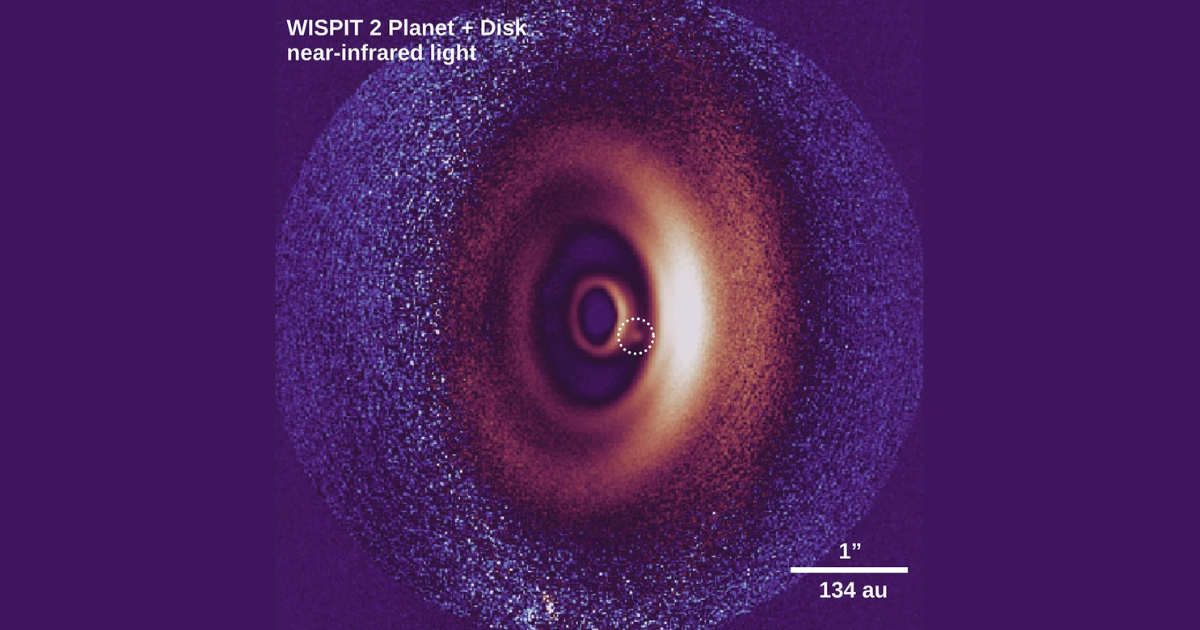A team of astronomers has detected a planet for the first time outside our solar system, embedded in a cleared gap of a multi-ringed disc.

The newborn planet WISPIT 2b is eating its way through its dusty cradle.
Astronomers have achieved a groundbreaking milestone by capturing the first-ever image of an exoplanet actively carving a gap in the dusty disk around its young star. The discovery, led by Leiden PhD researcher Richelle van Capelleveen, offers vital clues about how planets emerge and reshape their cosmic neighborhoods.
Although telescopes have photographed hundreds of young planetary disks over the past decade—many featuring striking rings and spiral patterns—very few have revealed the actual planets sculpting those features. Until now, the last confirmed detection of such an “embedded” planet was in the PDS 70 system in 2018..
This new find comes after seven years of searching as part of the WIde Separation Planets In Time (WISPIT) project. Using the SPHERE instrument on the European Southern Observatory’s Very Large Telescope in Chile, the team identified a planet dubbed WISPIT 2b. It is the first confirmed case of a young planet visibly shaping its birth environment—directly supporting long-held theories about planet formation.
Van Capelleveen described the moment as unforgettable: “Discovering this planet was an incredible experience—we honestly didn’t expect such a spectacular system. I’m thankful for the support of our partners worldwide, especially the students at the University of Galway, who helped us share the results so quickly.”
Study co-author Matthew Kenworthy (Leiden University) added, “This is the clearest detection of an embedded planet since PDS 70, and the first time we’ve seen one inside a cleared gap.”
Second author Christian Ginski (University of Galway) emphasized the wider implications: “This provides strong evidence that gas giants on wide orbits could have formed exactly where we observe them today, far from their parent stars.”
Researchers believe this system will become a key reference point for future studies of planet formation and disk-planet interactions, shaping the field for years ahead.












